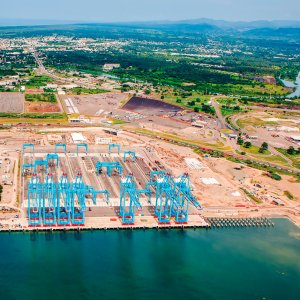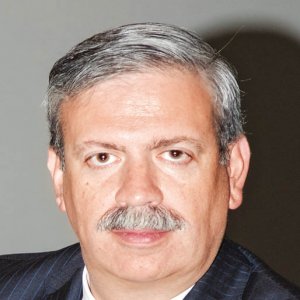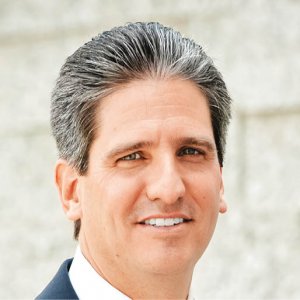Improving Mexico's Water Usage

STORY INLINE POST
Q: What does GBM Infraestructura look for when selecting projects for its portfolio?
A: Our investment philosophy is to use the highest quality operators and over the years we have developed close relationships with companies such as PINFRA and Aldesa. Our first filter is a set of requisites that projects must meet. They must be working on long-term developments with inelastic demand, protected against inflation and barriers of entry through capital expenditure that can be integrated with a partner and with an attractive payoff. Once the project passes the first filter, an indepth financial model reflecting the legal validity of the project is created. If it were a project for an energy auction, we would be selling electricity to CFE for 15 years and energy certificates for 20 years.
The agreement we make with the partner must protect us through an Engineering Procurement Construction (EPC) contract. If there is a counterpart through which the project will be leveraged, the partner must be creditworthy and the structure of the debt must be aligned with the interests of the equity. It is a long process that includes analysis, due diligence, financial structure and asset management.
Q: Which sectors are stoking the appetite of investors for infrastructure development?
A: The fund is divided into three sections: road, communications and transport infrastructure, water and energy. We are seeing an increase in energy projects in our pipeline and there are many great opportunities in energy infrastructure, whether in midstream or power generation. For many years, the country has experienced an infrastructure deficit in more than one sector in relation to the size of its economy. The federal government has limited resources since it began to lower its dependency on oil and gas so PPPs will play a vital role in bridging the country’s immense infrastructure gap. Our emphasis for investment has been these three sectors but we are opportunistic and if we see an opportunity that represents a profit, we will not limit our reach. We extended the concession of our two brownfield water projects and road infrastructure also has caught our eye, although these are high-risk projects due to rights of way. At the moment storage, generation or energy transportation and transmission projects are limited but the risk is lower as long as the company can adequately manage the construction.
Q: What drove GBM Infraestructura to invest in Mexico’s first private water operator?
A: At a constitutional level, the administration of water resources falls on the shoulders of each municipality in Mexico. These municipalities commonly lack the necessary economic or technical resources to manage the systems efficiently. There are two main factors in these types of models, namely the commercial and the physical efficiency of the systems. Physical efficiency is defined by how much water extracted is actually received by the end user. When a municipality experiences low physical efficiency due to leaks within its infrastructure, not only does that increase its cost of repairs, but it also increases operational costs. If system operators could find a way to increase physical efficiency, it would have a drastic impact on not only costs but also regional, social and environmental health.
Mexico’s physical efficiency is lower than 50 percent, which means that most of the water is lost before it reaches the population, and it has a commercial efficiency of around 60-70 percent. Our concession operates with a 97 percent commercial efficiency in Cancun and we are on our way to reach our goal of increasing physical efficiency to 70 percent in the next five years. To meet this goal, we are dividing the areas to identify, analyze and repair all inefficacies within that perimeter. It is a long and tedious process going from area to area but thanks to the technology available we can now use systems similar to ultrasound that allow us to see the leaks before breaking ground.
Placing a concession on water is often controversial because people link it to raising tariffs and privatization of natural resources. When the water system is operated through a concession, tariffs are established according to the average price throughout the country. Prices only vary depending on consumption and are strictly regulated according to usage throughout the country. The benefit of turning water systems into a concession is that concessions guarantee long-term investment and ensure the resources are used efficiently. Often, water operators have low physical and commercial efficiencies, along with high operational costs due to improper management of human resources and high electricity costs. In this case, most water operators are government entities, meaning they accrue losses and therefore must use other resources to rectify the inefficiencies within the system.
As a concessionary we give the government 20 percent of our revenue, provide the security of long-term investment and increase the efficiency of the water system way above the country’s average. There are many examples all over the world where these types of concessions have had a positive impact on society by increasing the quality of the service provided and at the same time maintaining a fair price. Nevertheless, these paradigms are difficult to break. We have a five-year concession with Quintana Roo in which we will invest a total of MX$4 billion (US$210 million) into the water infrastructure and incorporate the share the state receives from CONAGUA to optimize the entire system’s infrastructure. The amount of investment that is being injected into the water infrastructure is reaching quantities never seen before and this is being used to innovate and create databases that will ensure the pricing and quality of the service provided to the people.
Q: How will the Indios Verdes elevated viaduct impact mobility in Mexico City?
A: We are extremely excited about the Indios Verdes project in which we now have 45 percent equity in the MX$6 billion (US$316 million) total investment. The project will be an 8.5km elevated viaduct from Circuito Interior to the Mexico-Pachuca highway. These areas are highly congested and more than 177,000 vehicles pass through this area each day. Indios Verdes is an important stop on the city’s public transport system and this viaduct will relieve the traffic by allowing cars to pass above the public transport. Our partner in this project is PINFRA and we will begin construction at the end of 2016. This project is among the most important for this administration and it will have a tremendous impact on the population. It will be developed as a PPP and we have seen great interest from commercial banks to participate in the financial structure of the project. GBM Infraestructura favors structuring the financing with both commercial and development banks because the former provides companies with long-term financing whereas commercial banks offer short-term conditions but take leadership in terms of the financial structure. Investment funds are 100 percent committed and GBM Infraestructura’s CKD will offer attractive levels of risk and return. We already have a head start by buying materials such as steel to ensure stable prices.























